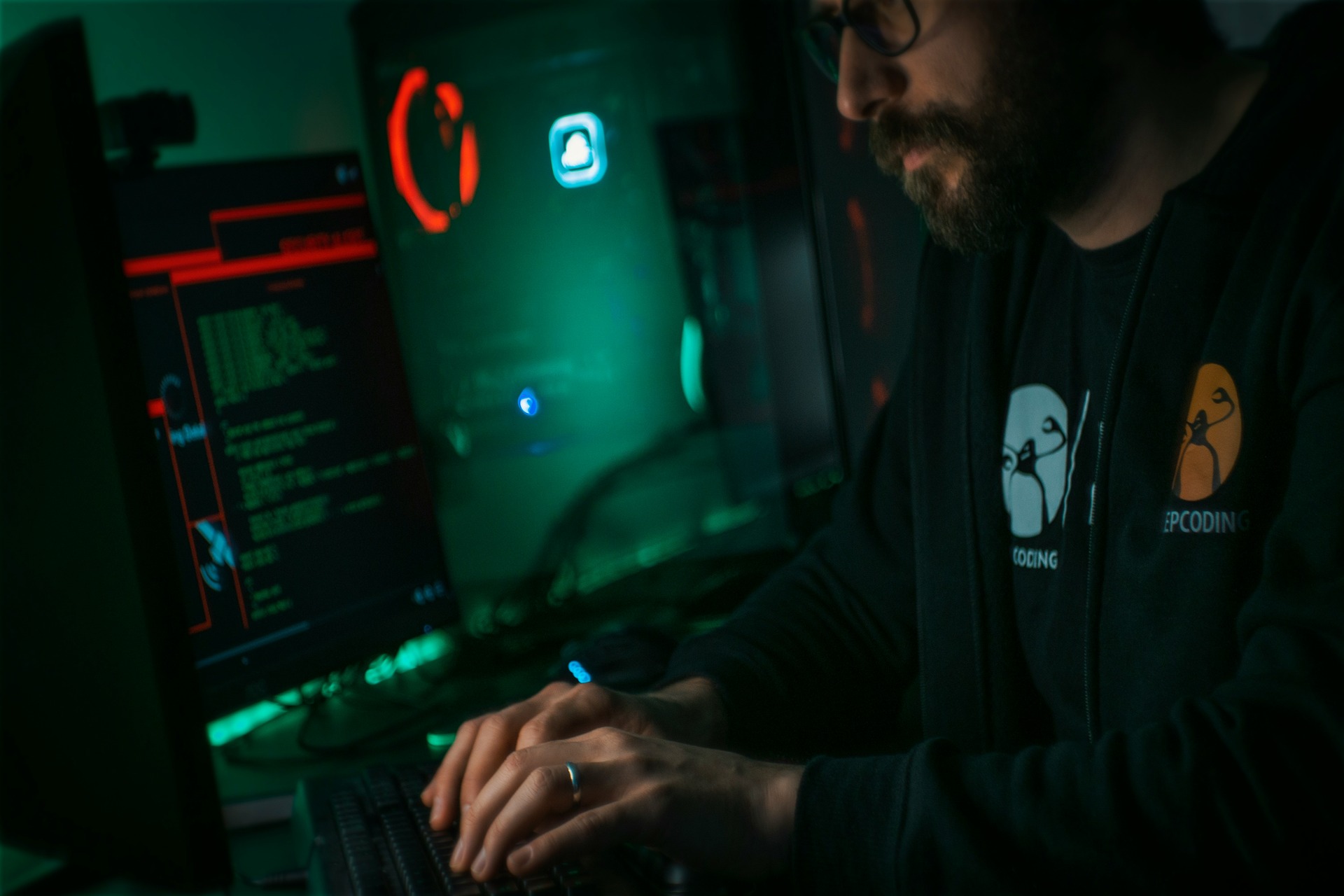
5 Common Cybersecurity Risks and Controls
February 4, 2023 - Lou Farrell
Revolutionized is reader-supported. When you buy through links on our site, we may earn an affiliate commission. Learn more here.
Most businesses today likely understand the need for reliable cybersecurity. However, knowing why to protect against something and understanding how to do so are two separate things. Organizations must learn specific cybersecurity risks and controls that address them to stay safe.
Cyberattacks can cost companies millions of dollars and are becoming increasingly common. If businesses hope to avoid these costly, damaging attacks, they must know what threats they face and how to mitigate them. These five cybersecurity risks are some of the most common today, so they’re a good place to start.
1. Human Error
One of the most threatening vulnerabilities for any network is its users. Some experts estimate as much as 95% of cybersecurity issues stem from human error. It’s easy to see why, too. Just one mistake from one employee can grant an attacker insider access, regardless of a company’s technical defenses.
Cybercriminals capitalize on human error in various ways. Many use phishing attacks or other forms of social engineering to trick people into clicking malicious links or disclosing sensitive information. Others look for errors like misconfiguration that leave a cloud system vulnerable. Regardless of the specifics, as long as humans make mistakes, they’ll be a popular target for cybercriminals.
How To Address It
The most important step in addressing human error-related vulnerabilities is education. All employees should receive thorough cybersecurity training, including specific best practices like strong password management and why these steps are important. Regular refresher training sessions and tests can ensure workers don’t forget these practices.
It’s also important to recognize that even experienced, knowledgeable employees can make mistakes. In light of that, businesses should set up their networks so no one breached account can jeopardize the entire company. That means segmenting networks and restricting access privileges as much as possible.
2. Ransomware
Another one of the most prominent cybersecurity threats today is ransomware. While all malware is potentially damaging, ransomware, which encrypts users’ data and threatens to delete or leak it without payment, is particularly threatening. It’s also growing quickly, seeing a surge in attacks as data becomes more important to companies’ daily operations.
Like all malware, ransomware can infect a business’s devices through several means, though the most common is phishing. Cybercriminals will pose as an authority figure or send an intriguing fake marketing message to convince insiders to click a malicious link. Once they do, it’ll install the ransomware, jeopardizing their systems and clients’ data.
How To Address It
Because ransomware typically starts as a phishing attempt, anti-phishing measures are some of the most important defenses. That includes using an email service with advanced filters and, more importantly, teaching employees how to spot these attacks. Workers shouldn’t click on or respond to anything from an unknown source and should be suspicious of any unsolicited or unusually urgent message.
Advanced, updated antivirus software is also important, as it can help spot and stop ransomware before it encrypts any files. Remediation measures like keeping up-to-date and encrypted backups of all sensitive information are another crucial step. This won’t prevent ransomware attacks, but it’ll lessen their impact.
3. IoT Vulnerabilities
The internet of things (IoT) is another important area of focus for cybersecurity risks and controls. There are more than 12.2 billion active IoT endpoints in the world today, and that number will keep rising. While this increased connectivity has many benefits, it also introduces some concerning vulnerabilities.
IoT devices typically have minimal built-in security measures and ship with weak default passwords. While many may not deal with sensitive data themselves, they can act as gateways to more important devices and data. As a result, their poor security limits the security of the entire network.
How To Address It
Because IoT devices can be difficult to secure, it’s best to keep them separate from other data and systems. Organizations should segment their networks to keep IoT gadgets on one network and mission-critical information on another. This separation ensures that attackers can’t use a potentially weak IoT endpoint to easily access more sensitive systems.
It’s also important to change these endpoints’ passwords to something stronger than their defaults. Enabling multi-factor authentication (MFA), if available, will further secure these devices, too. Businesses should also encrypt all IoT traffic to keep any sensitive information traveling between these devices private.
4. DDoS Attacks
Distributed denial of service (DDoS) attacks are another common cybersecurity risk to look out for. These attacks are fairly straightforward at their core. Attackers overload a website or server with a flood of requests, causing it to crash. Cybercriminals may then use that opening to inject malware into the system or simply leave it, taking down the server to frustrate users or stop operations.
The rise of artificial intelligence (AI) has made DDoS attacks more threatening. Attackers can use AI to direct vast networks of bots to perform these attacks, even adapting to different scenarios.
How To Address It
The best way to protect against DDoS attacks is to make a server more resilient. That means using cloud architecture that can scale up with rising demand quickly and using tools like automated load balancing to manage shifting capacity requirements. It’s also important to understand normal traffic patterns, which makes it easier to spot unusual traffic spikes, suggesting an attack.
Thankfully, many new tools help stop DDoS attacks, too. Web application firewalls (WAFs) and similar features can detect common attack methods and stop them before they cause an issue.
5. Supply Chain Vulnerabilities
Another important cybersecurity risk and control category to understand is supply chain vulnerability. As companies become more data-centric and connected, attackers can harm them by targeting their suppliers or partners. Instead of attacking one company directly, cybercriminals will target a software vendor or other third party to affect multiple businesses simultaneously.
Supply chain attacks like this often cost more than other data breaches and impact more organizations. They can also be easy to overlook, as it’s harder to understand a third party’s vulnerabilities and how they affect you than to understand internal processes.
How To Address It
Preventing supply chain attacks starts with holding partners and third parties to higher standards. Businesses should review other agencies’ cybersecurity measures and history before making any deals with them. Requiring vendors and other partners to perform regular penetration tests or meet regulatory security standards can help.
Businesses should also limit how much data and access they share with third parties, even trusted ones. The less access another party has, the less damage an attack on their end can do.
Know Your Cybersecurity Risks and Controls
Reliable data security begins with understanding relevant cybersecurity risks and controls that address them. When businesses know what threats they may face, it’s easier to implement effective defenses and mitigation strategies.
These five risks are far from the only ones a business may face, but they’re some of the most common and potentially damaging. As such, they’re a great place to start for any company looking to improve its cybersecurity.
Revolutionized is reader-supported. When you buy through links on our site, we may earn an affiliate commission. Learn more here.
Author
Lou Farrell
Lou Farrell, Senior Editor, is a science and technology writer at Revolutionized, specializing in technological advancements and the impacts on the environment from new developments in the industry. He loves almost nothing more than writing, and enthusiastically tackles each new challenge in this ever-changing world. If not writing, he enjoys unwinding with some casual gaming, or a good sci-fi or fantasy novel.







